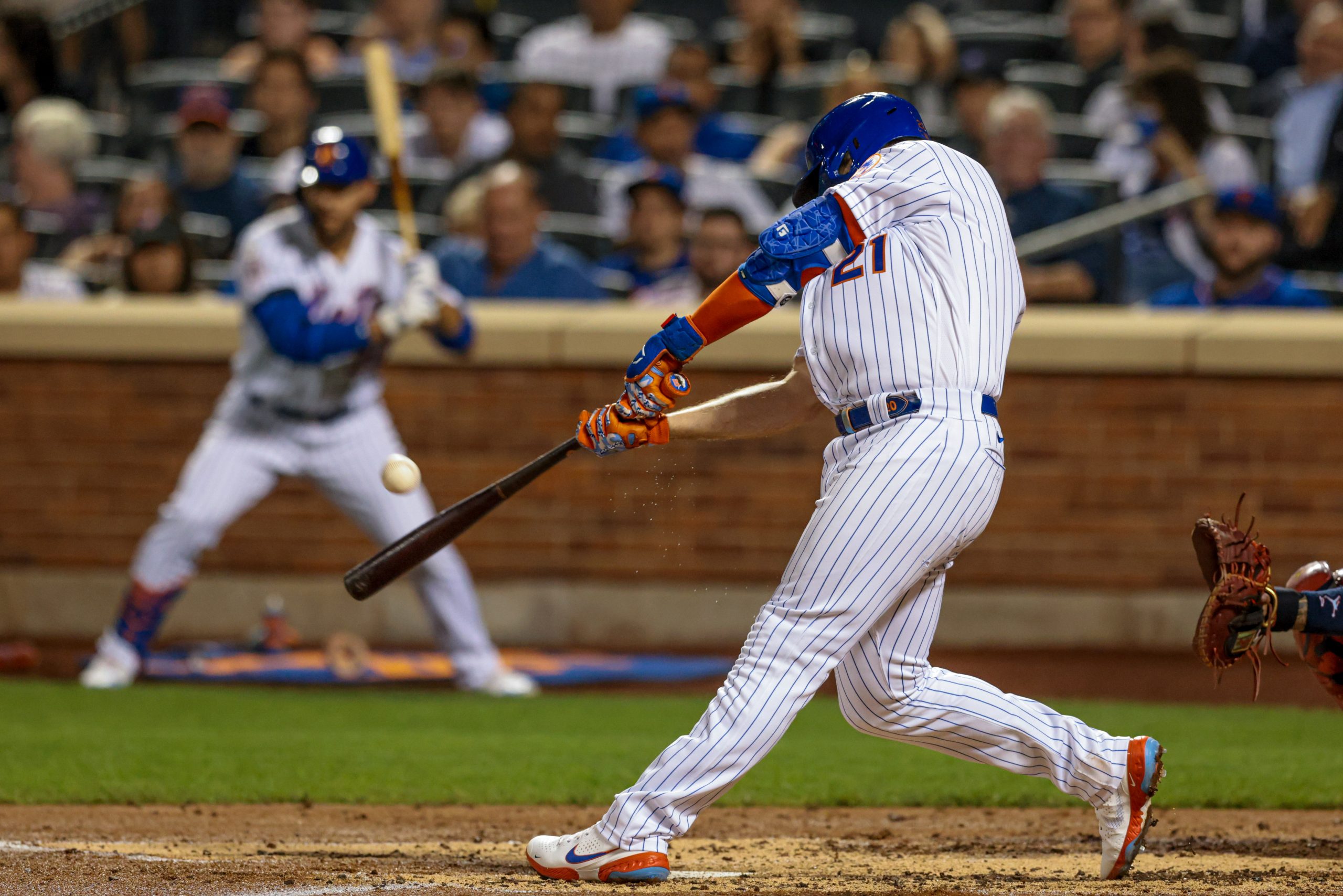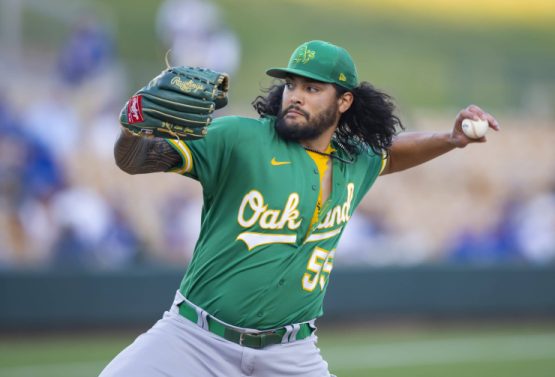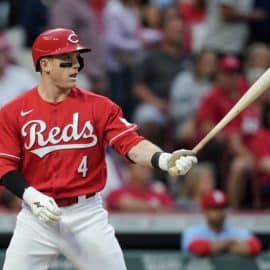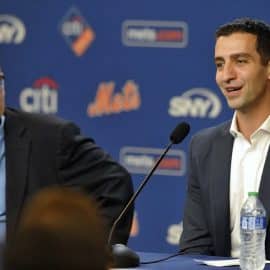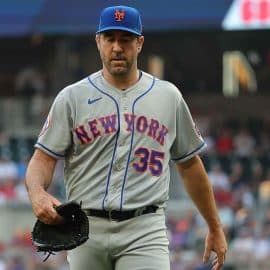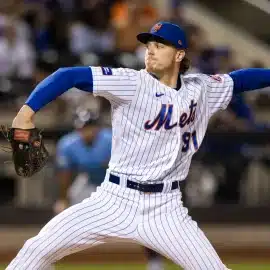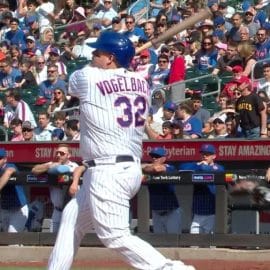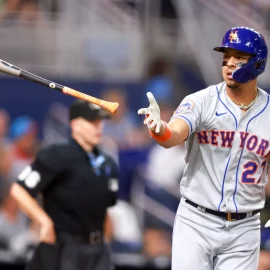Now that the 2022 season is over for the New York Mets, we will spend the next several weeks taking a look at the big picture. This deep dive will be broken down into phases every weekday, beginning today with a look at the Mets’ offense.
After a very tough offensive season in 2021, the Mets made some big changes to their approach in 2022. The emphasis changed from pure power to more of a contact approach with the import of free agents like Starling Marte and Eduardo Escobar and the results were good on a statisical basis as the Mets scored the fifth-most runs in baseball, averaging 4.77 runs per game. There were still issues offensively down the stretch as the Mets bats let them down in the postseason, including collecting just one hit in Game 3 of the Wild Card Series, so let’s go position by position to break down the offense as a whole.
Catcher
This was by far the worst offensive position on the team. James McCann missed a ton of time with injuries and wasn’t very effective when he was healthy, batting just .195 with three homers and 18 RBIs for the year. Tomas Nido’s overall numbers (.239/3/28) look better after a red-hot September but he was not much better than McCann. Michael Perez and Patrick Mazeika had their moments but the future of the position is Francisco Alvarez, who debuted at the end of the season and flashed the potential to solve this long-standing problem position. The Mets do lose credit for waiting way too long to give Alvarez an opportunity since he could have solved a lot of their problems with more time to get acclimated to big league pitching.
Grade: F
First Base:
The vast majority of the first base at-bats went to Pete Alonso, who put together a season that should earn him down-ballot votes for National League MVP. Alonso slugged 40 home runs on the year and set the Mets’ single-season franchise record for RBIs with 131, easily leading the team and tying Aaron Judge for the major league lead in that category. The Mets offense often went as far as Alonso could take them and he was a critical part of their attack.
Grade: A+
Second Base:
2022 saw a big comeback effort from Jeff McNeil, who won the NL batting title after going back to his traditional offensive approach that saw him make the All-Star Team in 2019. McNeil’s contact-heavy swing saw him hit .326 while still knocking 39 doubles and driving in 62 runs, making him an important piece for the middle of the Mets’ lineup.
Grade: A+
Shortstop:
Year 2 in New York was much better for Francisco Lindor, who looked much more comfortable playing under the spotlight of the Big Apple. Lindor increased his batting average 40 points, jumping all the way from .230 to .270, while hitting 26 home runs and driving in 100 runs for the first time in his career. The Mets have to be very satisfied that their long-term investment in Lindor will pay off after his excellent 2022, which should also see him get some MVP votes.
Grade: A+
Third Base:
Eduardo Escobar opened the year as the starting third baseman but lost the everyday job after enduring some of the worst slumps of his career. Luis Guillorme received plenty of at bats at third to get his glove in the lineup and was a solid contact hitter who didn’t offer much pop. Top prospect Brett Baty got a crack at third after both Escobar and Guillorme got hurt in August and flashed some of his potential before a torn ligament in his thumb ended his season after just eight games. Escobar ended up reclaiming the job on a full-time basis in September and got red-hot, winning the National League’s Player of the Month with a power surge that raised his season-long totals to respectable levels.
Grade: C+
Outfield:
The Mets relied primarily on Marte, Canha, and Brandon Nimmo as their everyday outfielders. Marte was one of the most productive hitters on the team, batting .292 with 16 homers and 63 RBIs, before missing the final month of the season with a broken finger that essentially broke the Mets’ lineup. Canha was a solid role player who had his moments but looked overmatched when asked to shoulder more offensive responsibility due to injuries and slumps from other players. Nimmo delivered a strong walk year performance as the Mets’ leadoff hitter and played in a career-high 151 games, setting himself up for a nice payday in the offseason. The primary outfield backups were Travis Jankowski, who added some speed off the bench early in the year, and Tyler Naquin, a trade deadline acquisition who went cold down the stretch to get himself left off the postseason roster.
Grade: B
Designated Hitter:
The addition of the DH was supposed to be a boon for the Mets, who spent years playing people out of position defensively in order to squeeze better hitters into the lineup, but it was anything but that in 2022. Robinson Cano lasted just a month before getting cut, turning the DH into a platoon between Dominic Smith and J.D. Davis. Neither offered much of anything in the power department, resulting in the Mets attempting to upgrade the position at the deadline by demoting Smith to the minor leagues, acquiring Daniel Vogelbach from the Pittsburgh Pirates and sending Davis to San Francisco along with three prospects to add Darin Ruf. Vogelbach was a decent pickup for the Mets but was too selective at the plate at times while Ruf was an outright disaster who hit just .152 as a Met and never homered despite being added to mash lefties. The Mets ended up trying both Alvarez and fellow prospect Mark Vientos in the role as well but their opportunities came too late for them to make much of an impact.
Grade: F
Check back tomorrow as the Season in Review series continues with a look at the Mets’ starting pitching!
Add The Sports Daily to your Google News Feed!
